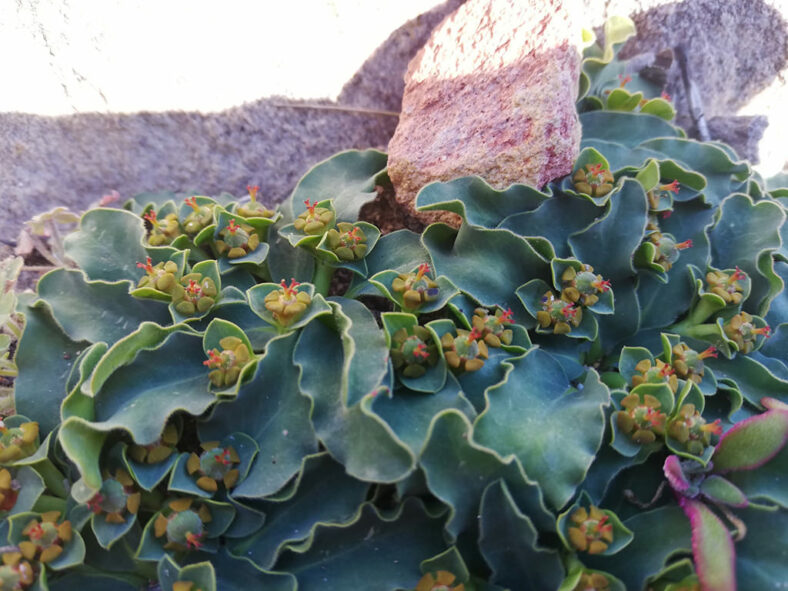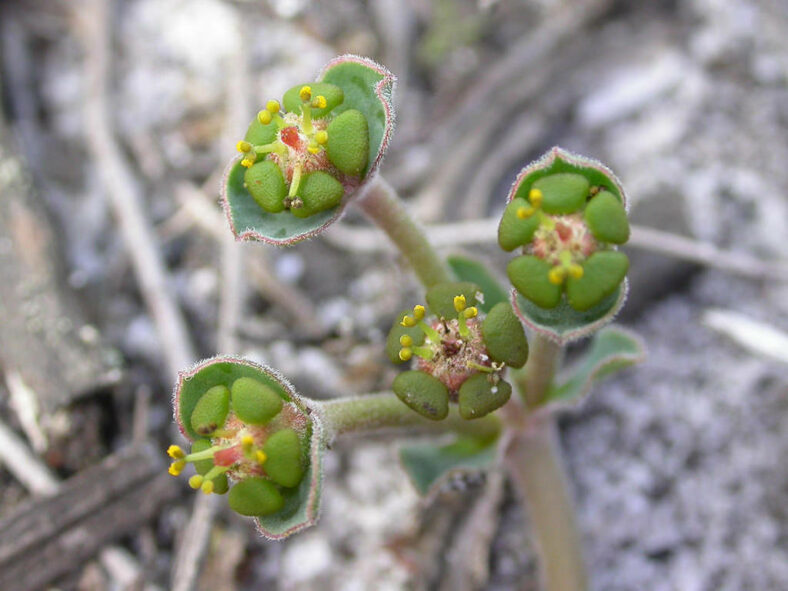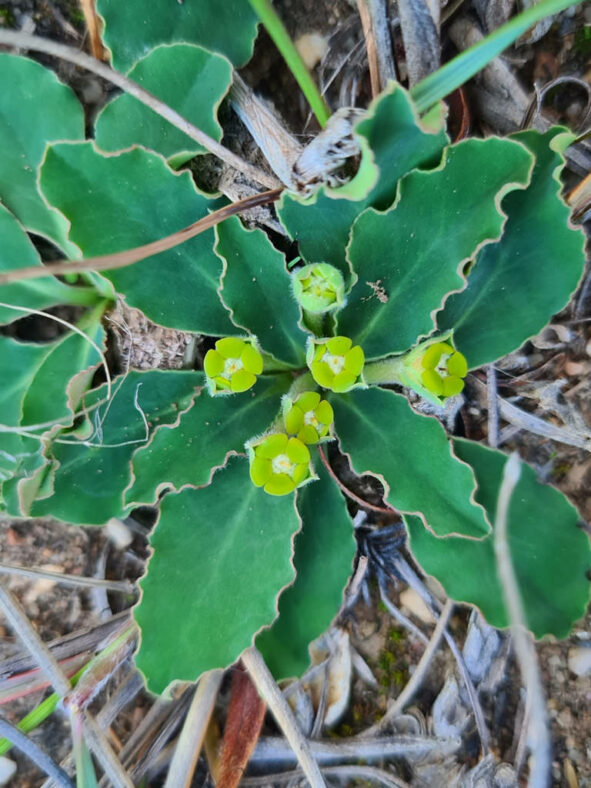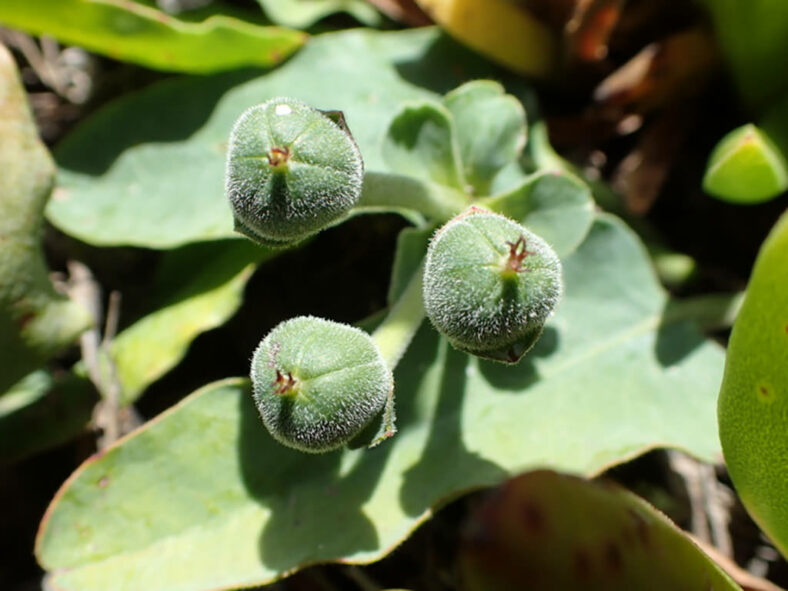Scientific Name
Euphorbia tuberosa L.
Common Name(s)
Tuber Milkball
Synonym(s)
Euphorbia crispa, Tithymalus crispus, Tithymalus tuberosus
Scientific Classification
Family: Euphorbiaceae
Subfamily: Euphorbioideae
Tribe: Euphorbieae
Subtribe: Euphorbiinae
Genus: Euphorbia
Etymology
The specific epithet "tuberosa (pronounced too-ber-OH-suh)" means "tuberous" and refers to the underground tuber of the plant.
Origin
Euphorbia tuberose is native to South Africa. It occurs in sandy and stony flats and slopes from Namaqualand in the Northern Cape to the Cape Peninsula, Matjiesfontein, and Riversdale in the Western Cape province.
Description
Euphorbia tuberosa is a dwarf geophyte with an underground tuberous stem and deciduous, grey-green, slightly hairy leaves arranged in a spreading rosette at the ground level. It can grow up to 2 inches (5 cm) tall, while the tuber can reach up to 1.6 inches (4 cm) in diameter. The leaves are narrow to broadly round-tipped with folded upwards, usually undulated or sometimes crisped margins. They can measure up to 2 inches (5 cm) long and up to 0.4 inches (1 cm) wide. This plant is a winter grower, losing its leaves during summer dormancy in its natural habitat.
Several cyathia (false flowers) appear on trailing stalks that can grow up to 2 inches (5 cm) long. They emerge from the leaf axils in winter and spring. The cyathia are surrounded by five green or yellow-green lobes that dominate the pointed bracts. This species is dioecious, which means the male and female flowers are on separate plants. The fruits are 3-chambered capsules sparsely covered in soft, white hairs. They can reach up to 0.3 inches (0.8 cm) in diameter and grow on female plants.

How to Grow and Care for Euphorbia tuberosa
Light: This succulent loves the sun. Place your indoor E. tuberose in a sunny window. You can also place the pot on the balcony or in the garden from spring to fall. Increase sun exposure gradually to prevent sunburn.
Soil: E. tuberosa requires well-drained soil. You can use a commercial potting mix formulated for succulents or make your own.
Temperature: High summer temperatures are not a problem, but low winter temperatures can damage or kill your plant. E. tuberosa can withstand temperatures as low as 30 °F (-1.1 °C). USDA Plant Hardiness Zones 10a to 11b, 30 to 50 °F (-1.1 to 10 °C).
Watering: From spring to fall, water when the top inch (2.5 cm) of soil feels dry. Reduce watering in winter. Give it just enough water to prevent wilting. The best time of the day to water your E. tuberosa in the warm season is the evening.
Fertilizing: Potted plants need regular feeding. Apply a balanced fertilizer in a 10-10-10 NPK formulation diluted to 1/4 strength weekly during the growing season.
Repotting: E. tuberosa will benefit from repotting but does not need to be repotted yearly. When your plant is outgrowing its pot, it is time to repot it in a larger pot and give it a fresh potting mix. The repotting is best done in early spring, at the beginning of the growing season. Wear gloves, protective clothing, and appropriate eye protection when repotting this succulent.
Propagation: The easiest and fastest propagation method is by stem cuttings. This plant can also be grown from seeds, but it can be difficult for seeds to germinate. The best time to take cuttings is in spring or summer. Sow the seeds in spring.
Learn more at How to Grow and Care for Euphorbia.
Toxicity of Euphorbia tuberosa
E. tuberosa produces a toxic white milky sap that may cause burns or irritation if it comes into contact with the skin or eyes. Therefore, keeping this plant away from children and pets is best.
Links
- Back to genus Euphorbia
- Succupedia: Browse succulents by Scientific Name, Common Name, Genus, Family, USDA Hardiness Zone, Origin, or cacti by Genus
Photo Gallery
Click on a photo to see a larger version.


